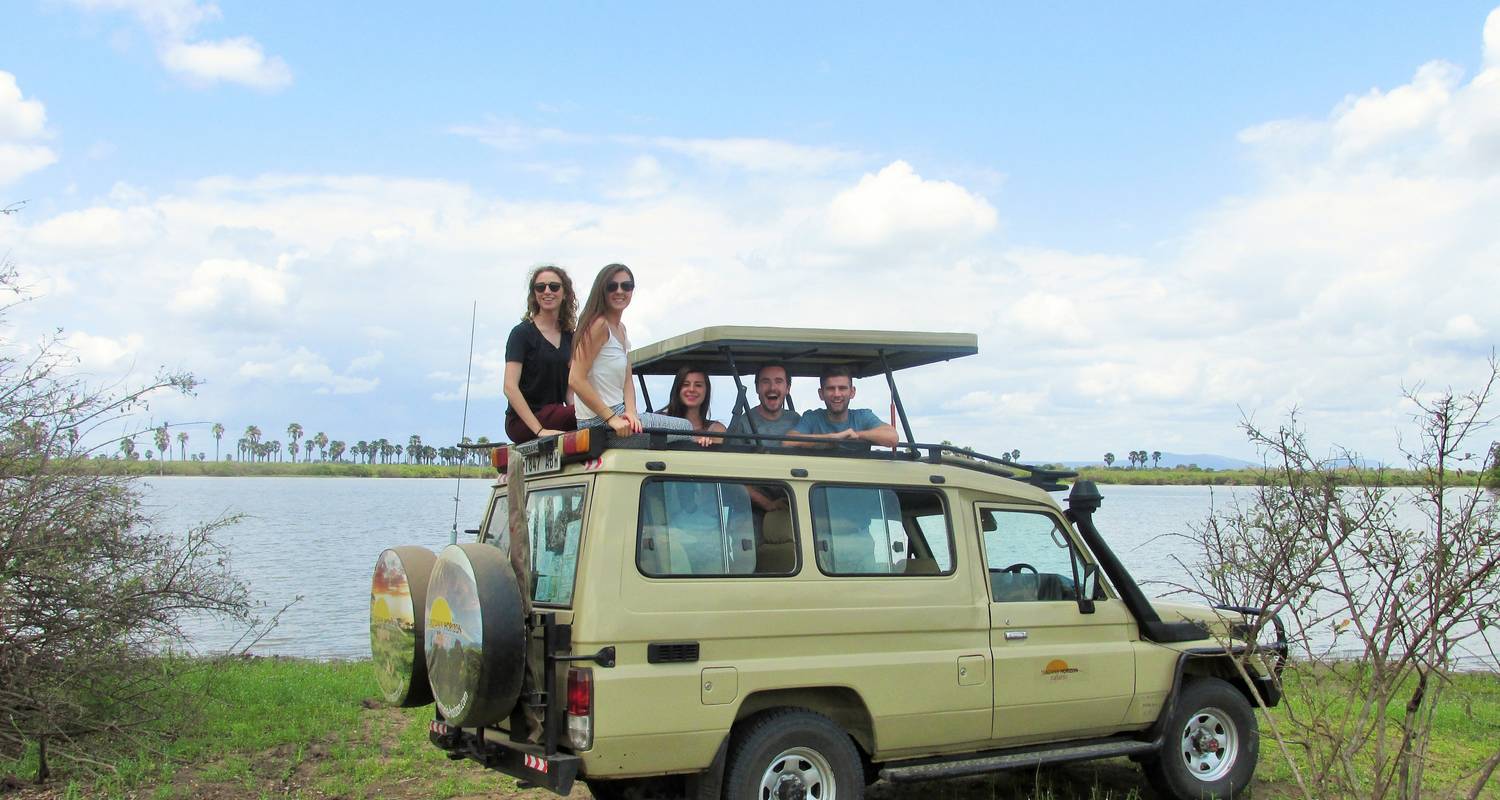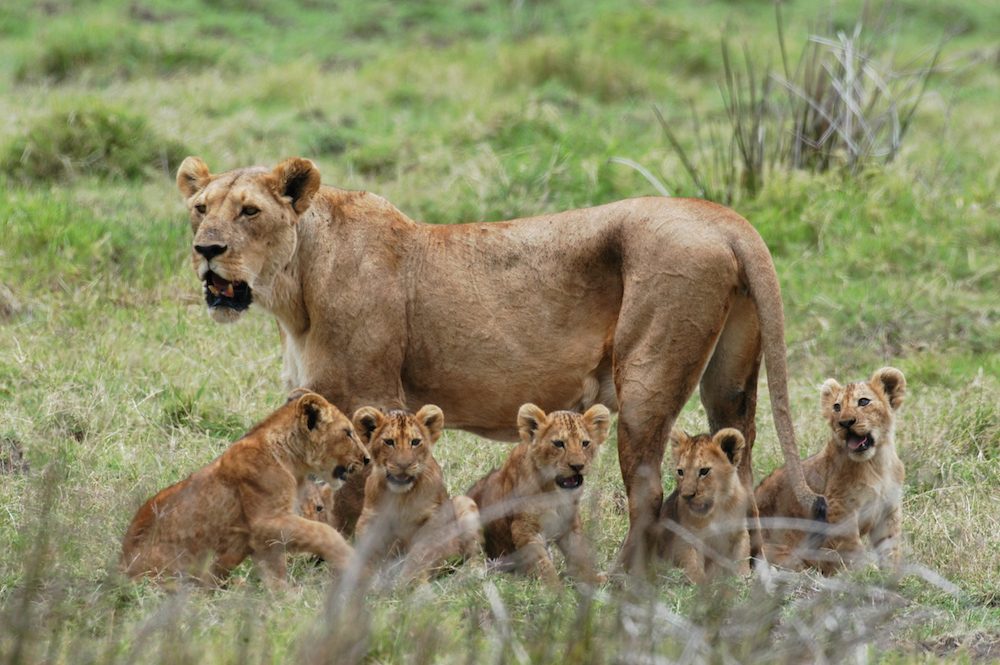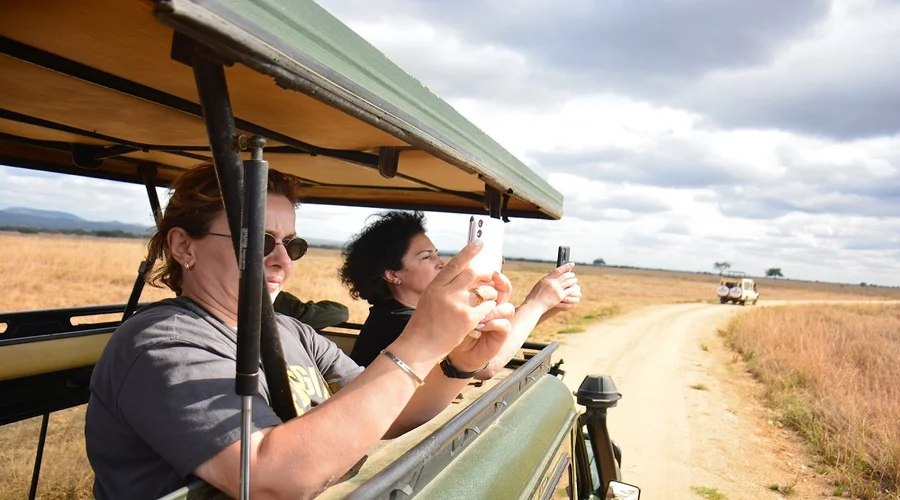Mikumi National Park, located in the southeastern part of Tanzania, is one of the country’s most accessible and diverse wildlife parks. Situated just 283 kilometers from Dar es Salaam, it is a popular destination for both locals and international visitors. Often described as a smaller version of the Serengeti, Mikumi offers a wide range of wildlife, stunning landscapes, and an authentic African safari experience. Its proximity to the city makes it an ideal option for travelers looking for a shorter yet fulfilling safari adventure.


Tourism Activities in Mikumi National Park
Mikumi National Park, is a treasure trove of wildlife and natural beauty, offering a wide range of activities for visitors to enjoy. Whether you’re a seasoned safari-goer or a first-time visitor, Mikumi provides numerous opportunities to experience the stunning landscapes and diverse wildlife that Tanzania is known for. Here’s a closer look at some of the top tourism activities in Mikumi National Park:
1. Game Drives
Game drives are the most popular and quintessential activity in Mikumi National Park. The park’s well-maintained network of roads allows for easy exploration, and visitors can embark on morning, afternoon, or full-day game drives. During these drives, you can expect to see a variety of wildlife, including elephants, lions, zebras, giraffes, and buffalos. The Mkata Floodplain, in particular, is a prime area for spotting large herds of herbivores, as well as the predators that follow them. Game drives offer an excellent opportunity to experience the thrill of observing animals in their natural habitat.
2. Walking Safaris
For those looking for a more intimate and immersive experience, walking safaris in Mikumi National Park are a fantastic option. Led by experienced guides, walking safaris allow visitors to explore the park on foot, providing a unique perspective on the flora and fauna. These guided walks give you the chance to learn about the smaller creatures and plants that are often overlooked on game drives. Walking through the bush, you may encounter various species of birds, insects, and smaller mammals, as well as learn about the traditional uses of different plants by local communities.
3. Birdwatching
Mikumi National Park is a paradise for bird enthusiasts, with over 400 species of birds recorded within its boundaries. The park’s diverse habitats, including wetlands, woodlands, and savannas, attract a wide range of bird species. Whether you’re an avid birder or just enjoy watching birds in their natural environment, Mikumi offers excellent birdwatching opportunities. Notable species include the lilac-breasted roller, African fish eagle, bateleur eagle, and various species of hornbills. Birdwatching can be enjoyed year-round, with both resident and migratory species making Mikumi their home.
4. Visit to the Hippo Pools
A visit to the Hippo Pools is a must-do activity in Mikumi National Park. The Kikoboga Hippo Pool, in particular, is a popular spot where visitors can observe large groups of hippos wallowing in the water. These pools are also frequented by crocodiles and a variety of waterbirds, making them a fascinating place to watch wildlife interact. The Hippo Pools are easily accessible and are often included as a stop on game drives. Watching the hippos and other animals in their natural environment provides a memorable and often entertaining experience.
5. Night Drives
For a completely different perspective of Mikumi National Park, consider going on a night drive. These excursions allow visitors to experience the park’s nocturnal wildlife, which includes species that are rarely seen during the day. With the guidance of a knowledgeable ranger, you might spot nocturnal animals such as bushbabies, genets, civets, and even the elusive leopard. The sounds and sights of the park at night offer a unique and thrilling experience, making night drives a popular activity for those looking to explore the park after dark.
6. Hiking and Nature Walks
In addition to walking safaris, Mikumi National Park offers several hiking trails that cater to different levels of fitness and interest. These trails take you through various landscapes, including forests, hills, and savannas, allowing you to appreciate the park’s natural beauty up close. Hiking in Mikumi is a peaceful way to connect with nature, and the trails offer opportunities to spot wildlife and enjoy panoramic views of the surrounding area. Whether you’re interested in a short walk or a longer hike, Mikumi’s trails provide a refreshing alternative to vehicle-based safaris.
7. Cultural Tours
Cultural tours are another enriching activity available in Mikumi National Park. These tours typically involve visits to nearby villages, where you can learn about the traditional ways of life of the local communities. You’ll have the opportunity to interact with the villagers, visit local markets, and see traditional crafts being made. These tours offer a deeper understanding of the cultural heritage of the region and provide a meaningful connection between the park’s natural environment and the people who live nearby. It’s a great way to complement your wildlife experiences with insights into local culture.
8. Photography Safaris
Mikumi National Park is a photographer’s dream, with its diverse landscapes and abundant wildlife offering endless opportunities for stunning shots. Whether you’re a professional photographer or an amateur looking to capture memories of your trip, the park provides excellent conditions for wildlife photography. The open plains, dramatic light, and variety of animals make it easy to take breathtaking photos. Special photography safaris can be arranged, often with guides who understand the needs of photographers and can help position you for the best possible shots.
1. Geography and Landscape
Mikumi National Park covers an area of approximately 3,230 square kilometers, making it the fourth-largest national park in Tanzania. The park is part of the larger Selous ecosystem and shares its southern boundary with the Selous Game Reserve. Mikumi is characterized by its wide-open plains, which are reminiscent of the Serengeti, as well as its varied landscapes that include rolling hills, grassy savannas, and dense woodlands. The Mkata Floodplain is a significant feature of the park, offering excellent wildlife viewing opportunities, especially during the dry season.
2. Wildlife and Game Viewing
Mikumi National Park is home to a rich diversity of wildlife, making it an excellent destination for game viewing. The park’s plains are teeming with animals such as zebras, wildebeests, impalas, and buffalos, which can often be seen grazing in large herds. Predators like lions, leopards, and hyenas are also present, though they may be more elusive. Mikumi is known for its population of elephants, which are commonly spotted near the park’s waterholes and rivers. Giraffes, hippos, and crocodiles are other highlights, along with smaller species like warthogs, jackals, and a variety of antelopes.


3. Birdwatching
Birdwatchers will find Mikumi National Park to be a rewarding destination, as it hosts over 400 species of birds. The park’s diverse habitats, including wetlands, woodlands, and grasslands, provide ideal environments for a wide range of bird species. Notable birds include the lilac-breasted roller, bateleur eagle, and the yellow-throated longclaw. The presence of water bodies like the Mkata River and its associated swamps attracts a variety of waterbirds, such as the African fish eagle and the saddle-billed stork. Birdwatching is excellent throughout the year, with both resident and migratory species present.
4. The Mkata Floodplain
The Mkata Floodplain is the heart of Mikumi National Park and one of its most significant attractions. During the dry season, the floodplain becomes a vital source of water for wildlife, making it a hotspot for game viewing. Visitors to the floodplain can expect to see large herds of herbivores, such as zebras and buffalos, as well as predators that follow the prey. The floodplain’s open terrain also provides excellent visibility, making it easier to spot animals from a distance. This area is particularly popular with photographers looking to capture the classic African safari experience.
5. The Hippo Pools
Mikumi National Park features several natural pools that are home to large populations of hippos. The most famous of these is the Kikoboga Hippo Pool, where visitors can observe hippos wallowing in the water, often in large groups. The hippo pools also attract other wildlife, including crocodiles and a variety of birds, making them a popular spot for visitors. The pool’s location near the main road makes it easily accessible, and it is often included as a stop on game drives within the park.
6. Safari Experiences
Mikumi National Park offers a range of safari experiences, catering to different interests and preferences. Game drives are the most common way to explore the park, with morning and late afternoon being the best times for wildlife viewing. The park’s network of roads is well-maintained, allowing for smooth and enjoyable game drives. For a more immersive experience, walking safaris with a guide are also available, providing a chance to explore the park’s flora and smaller fauna on foot. Night drives can be arranged for those interested in observing nocturnal wildlife.


7. Hiking and Cultural Tours
In addition to traditional safaris, Mikumi National Park offers opportunities for hiking and cultural tours. The park is surrounded by the Uluguru Mountains, which provide a stunning backdrop and offer hiking trails with panoramic views of the park and surrounding areas. Cultural tours to nearby villages can also be arranged, allowing visitors to learn about the traditions and lifestyles of the local communities. These tours often include visits to traditional markets, schools, and homes, providing a deeper understanding of the region’s culture.
8. Conservation and Research
Mikumi National Park plays an important role in wildlife conservation and research. The park is part of the larger Selous ecosystem, which is one of the most significant wilderness areas in Africa. Conservation efforts in Mikumi focus on protecting the park’s diverse habitats and species, particularly those that are endangered or threatened. The park is also a site for scientific research, with studies being conducted on topics such as animal behavior, ecology, and conservation. Visitors to the park can learn about these efforts and the challenges of wildlife conservation in Tanzania.
9. Accessibility and Accommodation
One of the key advantages of Mikumi National Park is its accessibility. The park is located just a few hours’ drive from Dar es Salaam, making it a convenient option for travelers with limited time. The road to the park is paved, allowing for easy access by car or bus. Mikumi offers a range of accommodation options, from budget campsites to luxury lodges, ensuring that visitors can find something that suits their needs. Many lodges are located within or near the park, offering stunning views and easy access to game drives and other activities.


Conclusion
Mikumi National Park is a fantastic destination for anyone looking to experience Tanzania’s wildlife without venturing too far from the city. Its diverse landscapes, abundant wildlife, and excellent accessibility make it an ideal choice for both first-time safari-goers to Africa and seasoned travelers. Whether you’re exploring the Mkata Floodplain, watching hippos at the Kikoboga Pool, or enjoying a game drive through the park’s scenic savannas, Mikumi offers an unforgettable safari experience that captures the essence of Tanzania’s natural beauty.

